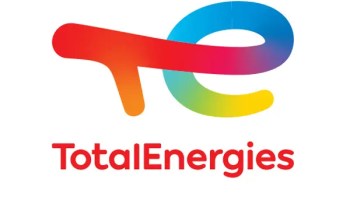… production value in the sector totaled N7.03 trillion in 2021
Capacity utilization in the manufacturing sector increased to 59.0 percent in the second half of 2021 from 53.7 percent recorded in the corresponding half of 2020; thus, indicating 5.3 percentage points increase over the period.
According to the Manufacturers Association of Nigeria (MAN) in its half year report for the fiscal year 2021, just released, it said that manufacturing capacity utilization increased by 6.6 percentage point when compared with 52.4 percent recorded in the preceding half. “Capacity utilization in the sector averaged 58.9 percent in 2021 from 49.5 percent average of 2020,” the report stated.
The increase in manufacturing capacity utilization stated was due to the phasing of economic and social restrictions meant to contain COVID-19 pandemic and the full rebounding of economic activities globally and in Nigeria within the period.
“In addition, there are increased capacities in the paper subsector brought in by 5 new paper mills that are into recycling of waste papers to produce cartons.
Also are the additional capacities as BUA Group introduced a cement factory in Sokoko and the new African Glass Limited factory that produced glass products.
Unfortunately, manufacturing activities in the non-Metallic Minerals sector have been persistently low following the exclusion of some of the veritable raw materials for glass production which are imported from the official forex window.
The situation was worsened by the limited availability and high cost of prospecting for local development raw materials in the country. Capacity utilization in the sector averaged 49.5 percent in 2021 as against 49.9 percent in 2020.
The manufacturing sector production output increased to N3.73 trillion in the second half of 2021 from N2.36 trillion recorded in the corresponding half of 2020; thus, indicating an N1.37 trillion or 58.1 percent increase over the period. It, however, increased by N0.07 trillion or 1.9 percent when compared with N3.66 trillion recorded in the preceding half. The production value in the sector totaled N7.03 trillion in 2021 as against N4.42 trillion recorded in 2020.
The increase in the manufacturing production value in second half of 2021 was associated with the increased cement production due to the new BUA cement factory in Sokoto; the African Glass new factory that produces glass products; and activities of the 5 new peppermills established that recycle waste paper into carton.
This was also highlighted by the increased production value in the Non-Metallic Mineral products sector (cement and glass are sub-sectors of Non-metallic) increased to N374.41 billion in the second half of 2021 from N74.18 billion and N249.79 billion recorded in the corresponding half in 2020 and the preceding half respectively.
Total production in the non-Metallic sector increased to N624.36 billion from N139.68 billion in 2020. Also, the production value in 6Ps increased to N67.28 billion in the second half of 2021 from N64.56 billion recorded in the same half in 2020 and N75.44 billion in the preceding half. The production value in the sector stood at N142.72 billion in 2021 as against N125.11 billion of 2020.
Unfortunately, Local raw materials utilization in the manufacturing sector dipped to 51.7 percent in the period under review from 56.5 percent recorded in the corresponding period of 2020; thus indicating 4.8 percentage points decline over the period. It, however, declined by 1.3 percentage points when compared with 53 percent recorded in the preceding half.
Local sourcing of raw materials averaged 52.4 percent in 2021 as against 57.5 percent in 2020 Since the full opening of the economy following the lockdown associated with COVID-19 pandemic, local raw materials and other manufacturing inputs have been relatively scarce and costly. This has also affected the output of the sector negatively.
Manufacturing inventory of unsold finished products dipped to N224.63 billion in the second half of 2021 from N303.22 billion recorded in the corresponding half of 2020; thus, indicting N78.59 billion or 25.9 percent decline over the period. However, it increased by N9.8 billion or 4.6 percent when compared with N214.83 billion recorded in the preceding half.
Inventory in the sector totaled N439.46 billion in 2021 as against N577.61 billion recorded in 2020. The decline in inventory in the period under review was attributed to the recovering aggregate consumption following the gradual rebounding of economic activities as COVID-19 pandemic receded.
Investment in the sector increased in the second half of 2021 to N73.18 billion from N56.44 billion recorded in the corresponding half of 2020; thus, indicating N16.74 billion or 29.7 percent increase over the period. It however, increased by N70.96 billion or 49.3 percent when compared with N144.14 billion recorded in the preceding half.
Manufacturing investment totaled N217.22 billion in 2021 as against N118.52 billion in 2020.
“Manufacturing investment has been gradually recovering following the return of economic activities as the issues of COVID-19 pandemic are continuously resolved. In the last one year significant investment has been recorded in the Pulp, Paper, Printing & Publishing (6Ps) sector with the establishment of 5 new paper mills that are into recycling of waste papers to produce cartons; there is also the new BUA Group cement factory in Sokoko; and the new African Glass Limited factory that produced glass products.”
As regards employment in the sector, the total historical cumulative jobs in the manufacturing sector were estimated at 1,671,441 by the end of 2021 based on surveys conducted since 2013. A total of 8508 jobs were created in the sector in the second half of 2021 as against 3,451 jobs recorded in the corresponding half of 2020 and 7,602 job created in the preceding half. The total net employment in the sector in 2021 after adjusting for job losses was 11,659 while net job losses in 2020 was 3257. The trend indicates that manufacturing job is also rebounding following the gradual return of economic activities in the sector after a year onslaught brought by COVID-19 pandemic.
olusola Bello





